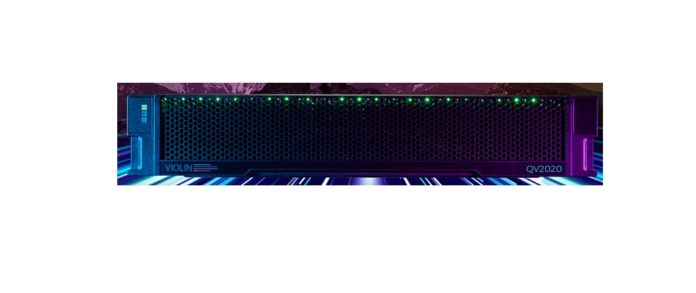StorCentric, the mini data storage conglomerate, has launched its first Violin-branded system since buying the company’s assets last October.
This is the Violin QV1020, an entry level NVMe drive all-flash array, which has basically the same chassis, software and performance as the current QV2020.
However, it starts at a lower capacity and can have fewer Fibre Channel ports, thus lowering its ticket price. A StorCentric spokesperson told us there is an up to 25 per cent cost savings on the QV1020, compared with the older version of the QV2020.
StorCentric CTO Surya Varanasi said in a press statement: “NVMe has taken hold in the enterprise, driven by the demands of high-performance applications such as big data analytics, machine learning, artificial intelligence, OLTP and data warehousing and their need for high-speed, low-latency access to storage media. The Violin QV1020 answers the call for these exact same NVMe capabilities, but for companies that have smaller capacity requirements with corresponding pricing.”
The QV1020 keeps the active-active QV2020 controller design and all its software. The QV1020 has a 15TB to 116TB usable capacity range (60TB to 464TB after data reduction), while the QV2020 usable capacity range is 116TB to 479TB (464TB to 1.7PB effective). There are two or four QV1020 Fibre Channel ports; the QV2020 has up to eight.

The Violin QV2020 launched in February 2020 in a 2RU chassis with 24 x NVMe hot-swap and encrypted SSDs, dual active-active controllers, 8 x 16Gbit/s FC ports and 10/25GbitE support. The capacity range was then 15TB to 479TB and a 4:1 data reduction ratio made the effective capacity range 60TB to 1.7PB. To avoid overlap with the QV1020, the capacity start point has been bumped up to 116TB.
QV software includes data deduplication, applicable at a volume level, snapshots and synchronous replication. Data writes are balanced across the SSDs to prolong their endurance. Both QV arrays have up to 7.1GB/sec bandwidth and sub-millisecond latency at 500,000 IOPS.








